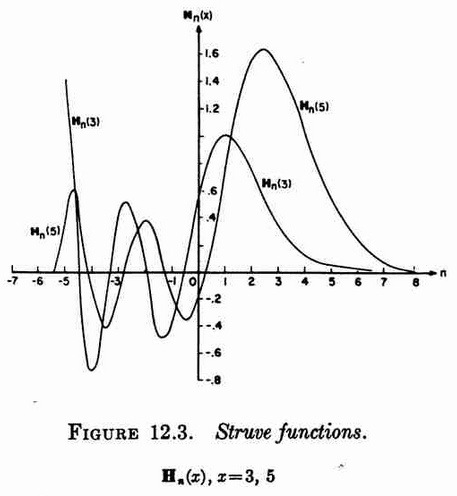Difference between revisions of "Struve function"
From specialfunctionswiki
| Line 10: | Line 10: | ||
=Properties= | =Properties= | ||
| − | |||
| − | |||
| − | |||
| − | |||
| − | |||
| − | |||
| − | |||
[[Relationship between Struve function and hypergeometric pFq]]<br /> | [[Relationship between Struve function and hypergeometric pFq]]<br /> | ||
| − | |||
| − | |||
| − | |||
| − | |||
| − | |||
| − | |||
| − | |||
| − | |||
| − | |||
[[Relationship between Weber function 0 and Struve function 0]]<br /> | [[Relationship between Weber function 0 and Struve function 0]]<br /> | ||
[[Relationship between Weber function 1 and Struve function 1]]<br /> | [[Relationship between Weber function 1 and Struve function 1]]<br /> | ||
Revision as of 13:18, 25 June 2016
The Struve functions are defined by $$\mathbf{H}_{\nu}(z)=\left(\dfrac{z}{2}\right)^{\nu+1} \displaystyle\sum_{k=0}^{\infty} \dfrac{(-1)^k\left(\frac{z}{2}\right)^{2k}}{\Gamma(k+\frac{3}{2})\Gamma(k+\nu+\frac{3}{2})}$$
Properties
Relationship between Struve function and hypergeometric pFq
Relationship between Weber function 0 and Struve function 0
Relationship between Weber function 1 and Struve function 1
